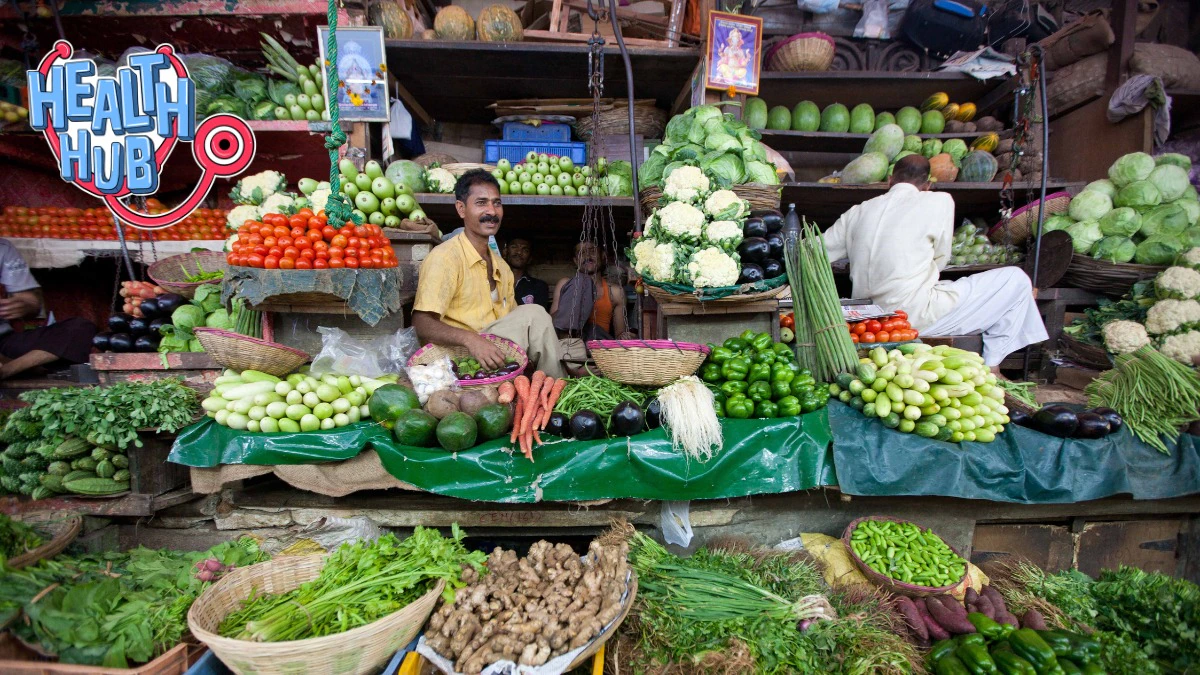It’s a little after 9:30 a.m. on a recent weekday, and hair-netted workers at the Alhambra Unified School District’s central production kitchen are boxing up the last of 350 handmade sushi rolls for the city’s three high schools.
The spicy tuna rolls, redolent of cooked fish blended with sriracha and mayonnaise, are a popular lunch offering among students.
“It’s one of our signature items that you can never take away,” said Dwayne Dionne, Alhambra Unified’s culinary specialist.
Alhambra Unified has sold the sushi for about 25 years. At one point, the district switched from white to brown rice — a healthier whole grain. Yet, it’s the kind of meal that will be scrutinized under a new state law: the Real Food, Healthy Kids Act.
Amanda Tejada loads a tray of chicken salad to be stored in the freezer at the Alhambra Unified central production kitchen.
(Carlin Stiehl / Los Angeles Times)
The law, which Gov. Gavin Newsom signed on Wednesday, provides a first-ever statutory definition of ultraprocessed foods in the U.S. and will ban some that are “of concern” in California schools starting in 2035.
Under the legislation, which is expected to touch off a major overhaul of school cafeteria meals, the state’s Department of Public Health will identify ultraprocessed foods “of concern” and “restricted school foods” — another prohibited category — by 2028. A year later, schools are required to begin phasing them out.
“There’s this really great opportunity to help a ton of people in a pretty straightforward way,” said Assemblyman Jesse Gabriel (D-Encino), author of the legislation. “I’m still learning about all this. … I [was] going to the grocery store trying to do right by my kids, but had no idea that we might be feeding them things that could be harmful.”
For years, scientific studies have shown that ultraprocessed food can lead to significant health issues among children, increasing the risk of obesity and asthma. Ashley Gearhardt, a professor of psychology at the University of Michigan, said that children are particularly vulnerable to “high-risk” ultraprocessed foods that deliver “really unnatural levels of rewarding ingredients like refined carbohydrates and added fats, and … they’re being amplified with all these colors, preservatives and flavor enhancers.”

Dwayne Dionne, Alhambra Unified’s culinary specialist, at the district’s central production kitchen.
(Carlin Stiehl / Los Angeles Times)
Such ingredients can trigger in children “compulsive, addictive [behavior] that you see so often with these sorts of products,” said Gearhardt, an expert on food addiction who testified in support of the bill.
The legislation will not ban all ultraprocessed foods from schools — far from it.
Consider Alhambra Unified’s sriracha-laced spicy tuna roll. Sriracha could be regarded as an ultraprocessed food — owing in part to the presence of xanthan gum, a thickening agent — but it is not expected to be classified one under the new law’s definition of the category. The sushi, therefore, is unlikely to be deemed an ultraprocessed food “of concern” or appear on the “restricted” list, experts said.
That would be welcome news for Patty Zaragoza, a food service worker at Alhambra Unified’s central kitchen. After boxing up the last of the 350 sushi rolls, she said she never tires of them.
“Oh no, I love it!” she said.
The path to law
For Gabriel, who was first elected in 2018, the Real Food, Healthy Kids Act marks the third food-related law he has spearheaded.
In 2023, Gabriel authored the California Food Safety Act, which prohibits several food additives — including red dye No. 3 — that are commonly found in soda, candy and cereal. A year later, the assemblyman authored the California School Food Safety Act, which gained widespread attention because it bans from schools Flamin’ Hot Cheetos and other products that include certain synthetic food dyes.
Gabriel said that his extended foray into food safety was an unexpected turn — but one that is personal. He has three children in elementary school. “A lot of the ways that I look at the world are through the lens of a dad,” he said.
A turning point: Gabriel learned that the ill effects of certain synthetic food dyes can be amplified in children who have attention-deficit/hyperactivity disorder.
ADHD “was something I struggled with as a kid,” he said, “and one of my sons is working through” it.
Since Gabriel began authoring food-related legislation, the rise of the controversial Make America Healthy Again movement has spotlighted issues related to dyes and other additives, and their possible links to a variety of health issues. But he said that the new law emanates out of “sound science,” adding, “We were doing a lot of this work before anybody had ever heard of MAHA.”
In a statement, Newsom said that “California has never waited for Washington or anyone else to lead on kids’ health.”
“We’ve been out front for years, removing harmful additives and improving school nutrition,” he said. “This first-in-the-nation law builds on that work to make sure every California student has access to healthy, delicious meals that help them thrive.”

Carol Chan portions out beef and bean chili at the Alhambra Unified central production kitchen.
(Carlin Stiehl / Los Angeles Times)
Gabriel’s bill garnered strong bipartisan support. But it was opposed by groups including the California Farm Bureau. Christopher Reardon, vice president of policy advocacy for the bureau, said in a statement that it “supports efforts to improve public health,” but has questions about how the law will be implemented.
The Farm Bureau, he said, “will continue working with its agricultural coalition to advocate for science-based food classification standards and ensure that legislation supports farmers in adapting to changes.”
Inside the ban
So what will be banned?
It’s complicated.
First, to be considered ultraprocessed, food must contain one of several nonnatural substances spanning eight categories, among them emulsifiers, stabilizers, flavor enhancers and flavoring agents. Then, it must have high amounts of saturated fat, sodium or added sugar, or contain certain kinds of nonnutritive sweeteners.
There are several carve-outs. For example, a food that would be considered ultraprocessed only because of the inclusion of salt or certain natural seasonings cannot be categorized as one. And other items cannot be considered ultraprocessed, including raw agricultural commodities.
Gabriel said he worked with the food and beverage industries to exempt certain items that made sense, such as minimally processed prepared foods, which include canned fruit and vegetables. There were talks, he said, with representatives of the dairy industry, the protein industry, and some that don’t even serve food in schools — such as makers of alcohol.
“For a lot of them, it was about, ‘As you define ultraprocessed foods, how are you doing that? How is that going to impact our product?’” he said.
It isn’t yet clear what foods will be deemed ultraprocessed foods “of concern,” or which will be classified as “restricted.” The state’s Department of Public Health will create these lists of foods by 2028, so that schools can prepare for the ban to take effect.
The department must weigh a variety of factors, among them whether the products include a warning label in another jurisdiction about “adverse health consequences,” and whether they contain a substance that, based “on reputable peer-reviewed scientific evidence,” is linked to “health harms or adverse health consequences” such as cancer and cardiovascular disease.
“That’s an inquiry that ought to be undertaken by California state scientists, not by legislators,” said Scott Faber, senior vice president of government affairs at the nonprofit Environmental Working Group, who testified in support of the legislation.

Andrew Vasquez prepares black bean and corn relish at Alhambra Unified’s central production kitchen.
(Carlin Stiehl / Los Angeles Times)
The law will put the onus on vendors, prohibiting them from selling the banned items to California school districts starting in 2032. But it isn’t yet clear how districts will respond to it.
Los Angeles Unified, the largest school meal provider in the state, declined to make its director of food services available for an interview.
William Fong, Alhambra Unified’s director of food and nutrition services, pointed out that his district already complies with U.S. Department of Agriculture standards for school food. Adhering to a new standard won’t be too difficult, he said, even if changes are required.
“There’s always a way we can substitute … items in a recipe,” Fong said. “And we have time.”
Gabriel believes that vendors supplying food to school districts will comply with the law because California is a lucrative market for them. It could be as simple as swapping out an ingredient or two in a pepperoni pizza or corn dog.
And, he noted, about a billion meals will be served in California schools this year.


